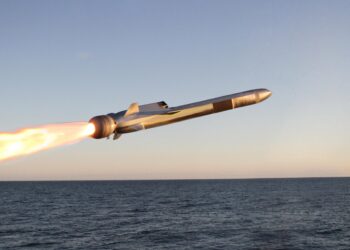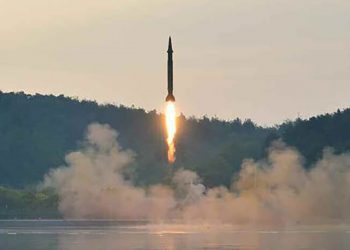Raytheon Company,
PACIFIC MISSILE RANGE FACILITY, KAUAI, Hawaii: In a first-of-its-kind dual missile defense test today, Raytheon Company produced Standard Missile-3 (SM-3) and Standard Missile-2 (SM-2) simultaneously engaged targets over the Pacific Ocean.
This was the first time a U.S. Navy ship demonstrated simultaneous ship engagements against both cruise and ballistic missile targets. It was the eighth successful intercept for the Aegis Ballistic Missile Defense system's SM-3.
The SM-3 Block IA destroyed a short-range ballistic missile target in space while SM-2 Block IIIA engaged a cruise missile threat at a lower altitude. Both intercepting missiles were fired from guided missile cruiser USS Lake Erie (CG 70) by the ship's crew. The ballistic missile target was launched from the U.S. Navy's Pacific Missile Range Facility on Kauai. The subsonic cruise missile target was launched from a range aircraft.
“The success of the SM-3 program is a validation of our strong Missile Defense Agency, Navy and contractor team,” said Louise Francesconi, president of Raytheon Missile Systems. “This strong customer relationship and our ability to balance kill vehicle, missile and system requirements helped to ensure a successful mission.”
This test, Flight Test Mission-11, was the second with the Block IA version of SM-3, and the first IA with a full-capability solid divert and attitude control system. Raytheon is delivering Block IA rounds for operational use on Navy cruisers and destroyers.
The SM-3 Block IA provides increased capability to engage short- to intermediate-range ballistic missiles. The SM-3 Block IA incorporates rocket motor upgrades and computer program modifications to improve sensor performance, missile guidance and control, and lower cost. It also includes producibility and maintainability features required to qualify the missile as a tactical fleet asset.
“SM-3 represents a truly global missile defense capability,” said Jim Maslowski, Raytheon Missile Systems international programs vice president and former director, U.S. Navy International Program Office. “SM-3 can leverage the deployed base of Standard Missile, which is in operation with 13 nations worldwide. SM-3 really fits into the Chief of Naval Operations' 1,000-ship navy concept.”
Raytheon's Missile Systems business in Tucson, Ariz., is developing SM-3 and leads the integrated team effort, which includes Alliant Techsystems, Aerojet and The Boeing Company. The kinetic warhead seeker and final integration occur in Raytheon's state-of-the-art kill vehicle space manufacturing facility in Tucson, alongside the Exoatmospheric Kill Vehicle, an element of the Ground-based Midcourse Defense program. Final assembly and testing of SM-3 occurs at Raytheon's Camden, Ark., facility.
SM-2 Block IIIA is an all-weather, ship-launched, medium- to long-range fleet air defense system, part of a 50-year legacy of ship self-defense systems.
Raytheon Company, with 2006 sales of $20.3 billion, is a technology leader specializing in defense, homeland security and other government markets throughout the world. With a history of innovation spanning 85 years, Raytheon provides state-of-the-art electronics, mission systems integration and other capabilities in the areas of sensing; effects; and command, control, communications and intelligence systems, as well as a broad range of mission support services. With headquarters in Waltham, Mass., Raytheon employs 73,000 people worldwide.









